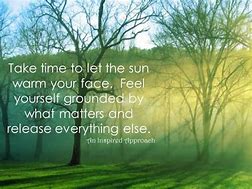
Last Monday was the first day for residents in our township to use our new 65-gallon recycling carts. Very specific instructions came with these carts: what materials would be accepted; what materials would not be accepted; what way they must face; and, what distance they must be from garbage cans, mailboxes, vehicles. The former recycling bins were no longer to be used. I noticed that some of my neighbors still had their former bin out. Some had the new cart right up against their garbage can. And , others had their carts facing the wrong way.
I happened to be outside when the waste management truck came up our hill, and I watched to see how the driver would handle everything. The truck is equipped with automated arms that are used to pick up the carts and dump the recyclables into the truck. BUT, the arms are only on one side of the truck. (Our road is a short one that dead ends at the top of the hill. Only way for this type of truck to work on our road is for it to come up and do one side, back down, then back up to do the other side.) At each house, the driver had to get out the truck, walk to the other side of the road, roll the cart to the truck, line it up, and then activate the arms to do their “thing” with the cart. (OK, so much for automation and a time saver for the driver!) Seeing this, my husband went over and asked him if it would be helpful if we all put the carts on the same side of the road for him. His response, “It doesn’t matter. This is fine.” He further went on to say, “No big deal. This is day one of the new system. We’ll see how things work out.” 
I LOVED this man’s response. Rather than being angry or upset over having to do a lot of extra work, he just took things in stride. Right away, “don’t sweat the small stuff” popped into my mind. His reaction to the change in how he did his job got me to thinking that the philosophy of “don’t sweat the small stuff” is a good one for all of us to follow when we are dealing with change.
The term “don’t sweat the small stuff…and it’s all small stuff” was coined by Dr. Wayne Dyer after a foreign publisher used an endorsement by Dr. Dyer from a previous publication for a current book by Richard Carlson for which permission hadn’t been received. Dr. Carlson wrote an apology to Dr. Dyer, explaining the situation and all that he was doing to rectify the situation. Dr. Dyer responded to Dr. Carlson with the following, “Richard. There are two rules for living in harmony. #1) Don’t sweat the small stuff and #2) It’s all small stuff. Let the quote stand. Love, Wayne.”

 The phrase comes from the book by the same name written by Richard Carlson. In the introduction to the book he writes, “Whenever we’re dealing with bad news, a difficult person, or a disappointment of some kind, most of us get into certain habits, ways of reacting to life – particularly adversity – that don’t serve us very well. We overreact, blow things out of proportion, hold on too tightly, and focus on the negative aspects of life. When we are immobilized by little things…our (over-) reactions not only make us frustrated but actually get in the way of getting what we want.”
The phrase comes from the book by the same name written by Richard Carlson. In the introduction to the book he writes, “Whenever we’re dealing with bad news, a difficult person, or a disappointment of some kind, most of us get into certain habits, ways of reacting to life – particularly adversity – that don’t serve us very well. We overreact, blow things out of proportion, hold on too tightly, and focus on the negative aspects of life. When we are immobilized by little things…our (over-) reactions not only make us frustrated but actually get in the way of getting what we want.”
Those words describe how many of us react to change. We may overreact, we may blow things out of proportion, we may hold on too tightly to what was, and we may focus on the negative of what is happening in the changed environment. In times of change, we need to learn how to replace our old habits of reaction with new habits of perspective (ah, my waste management worker was practicing “new habits of perspective” on his route day one with the new carts). So, this week, I’d like to explore some strategies that will help you do just that and that will help you respond to life and the changes it brings a little “more gracefully.” 
Don’t sweat the small stuff tells us to not worry about little problems, trivial or unimportant issues, nor to worry about things that are not important. Easier said than done, right? Why is it so hard to not sweat the small stuff? It is hard because worry tends to be a type of overthinking where we focus on things that are out of our control (as can be so much of the stuff in a changed environment). Winston Churchill once said, “When I look back on all these worries, I remember the story of the old man who said on his deathbed that he had had a lot of trouble in his life, most of which had never happened.” So, what are some things we can do to practice not sweating the small stuff?
Keep Things in Perspective. Don’t be overwhelmed by small things; try to see the bigger picture. For whatever is worrying/bothering/causing you concern, how big a deal is it really? What effect is the issue really having on your life? Is it truly important or is it a “side” issue? If truly important, stop worrying and just take action. If insignificant, stop worrying, don’t give it any importance, and move on. 
Stay Focused. When you let your mind wander, there is a good chance that it will wander to the “dark side” and have you thinking of the negative instead of the positive, especially if you are worried about the changed environment. If you keep your mind focused on the present, you have a better chance of avoiding unpleasant and unproductive thoughts. 
Control Your Thoughts. Jon Gordon, in his book The Shark and The Goldfish, said, “If you think your best days are ahead of you, they are. If you think your best days are behind you, they are.” You are in control of your thoughts. The key to reducing anxiety and worry is learning the ability to control your thoughts. You have the ability to decide which thoughts to pursue and which thoughts to reject. Learning that you control you mind is the first step to beating worry.

Today is What is Important. Today is the tomorrow we worried about yesterday. Yesterday happened, tomorrow is not here yet, so all we really have is today. A common source of worry is using too much mental energy on the past or future. This is not to say that you should not plan for the future or take into consideration things from the past, but many of us spend too much time worrying about what has happened or what could happen. Try to take the unknowns of life and put them in the back of your mind, instead of trying to figure out every solution. You will be surprised about how many times answers will come to you when you are able to do this.

Delay Worrying. If you find yourself worried about something that has not yet happened, try telling yourself, “let me worry about this tomorrow; there is no need to worry about it today because it won’t happen for quite a while anyway.” Whenever the issue comes to mind, just delay worrying for another day. The fact is that most worries never occur; delaying them is just a clever way of dealing with our negative mind. The nature of our mind is to create problems and things to worry about, but this is a way to forget about them. 
Take Action. When we worry about things we can become paralyzed by fear. Rather than just worrying, think very carefully about what practical steps you can take to deal with the issue. If you just worry and feel powerless the issue will not go away, but will continue to take up space in the back of your mind. By taking action and working towards a resolution you will feel like you have more control over the issue. Some issues shouldn’t be ignored and may require action; however, for other worries there are no steps that you can take because the worry is mostly imaginary. If you realize there is nothing you can actually do, this is a very good reason to stop worrying about it.

Learn to relax. Relaxation techniques are a great way to reduce anxiety and worries. They can also increase your ability to self-manage stress. Practiced regularly, relaxation techniques can counteract the debilitating effects of stress. Common relaxation techniques include deep breathing, guided imagery, meditation, listening to calming music, and activities like yoga and tai chi.

Meditate. Daily meditation — instead of worrying — may help you move beyond negative thoughts and worries. With meditation, you purposefully pay attention to what is happening at the present moment without thinking of the past or future.
Have a strong social network. We have talked a lot about the importance of having “touchstones” in our life especially when dealing with change. Our ‘touchstones’ can help us put things in perspective and help us stay focused. Sharing with them what we’re going through, venting to them, or just having them listen to what we’re worried about will go a long way helping us ‘not sweat the small stuff.’ Remember, friends provide a measure of stability that is most helpful when dealing with change. They listen, they encourage, they provide suggestions and advice, and they are just there to provide whatever support may be needed.

Talk to a professional therapist. If you have tried the suggestions above, but still find that you are an ‘excessive worrier,’ you might benefit from professional counseling. A counselor or therapist can help you develop appropriate coping strategies to deal with issues that trigger excessive worrying.
There are always things to worry about, but, as it has often been said, worrying is not going to help. Shantideva’s advice is appropriate: “If the problem can be solved then why worry? If the problem cannot be solved, worrying will do you no good.” Either take practical steps to deal with the problem or don’t waste your time worrying about unnecessary things (or sweating the small stuff). The key is to live in the present moment; when we worry we are thinking of the future or past and this prevents us from enjoying the present moment. To reduce worries and anxieties is not to ignore problems – it means we work toward solutions rather than just thinking of bad outcomes. As Dr. Dyer says, “There are two rules for living in harmony. #1) Don’t sweat the small stuff and #2) It’s all small stuff.” I hope that your coming days are full of harmony because you are no longer sweating the small stuff!










































































